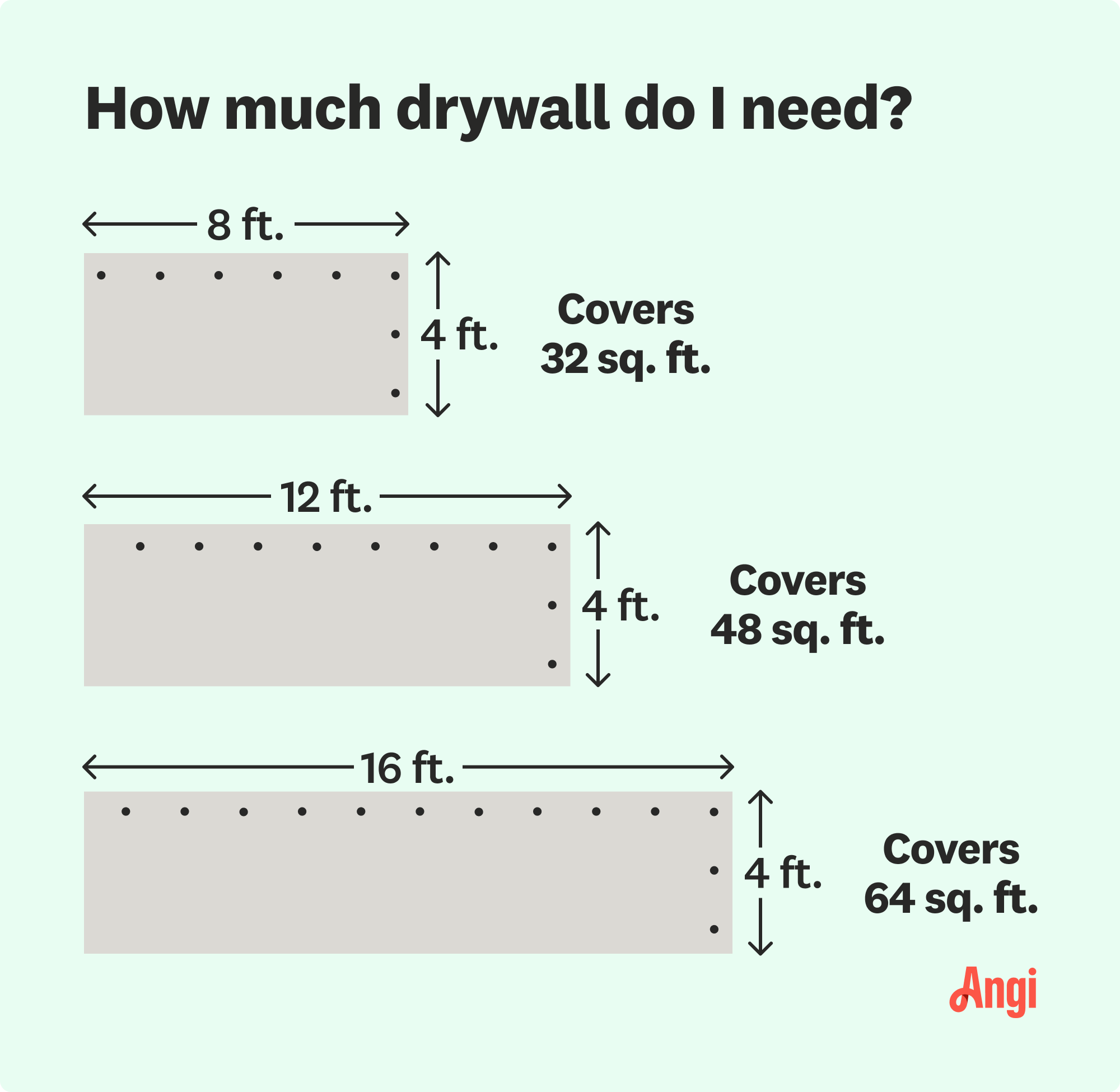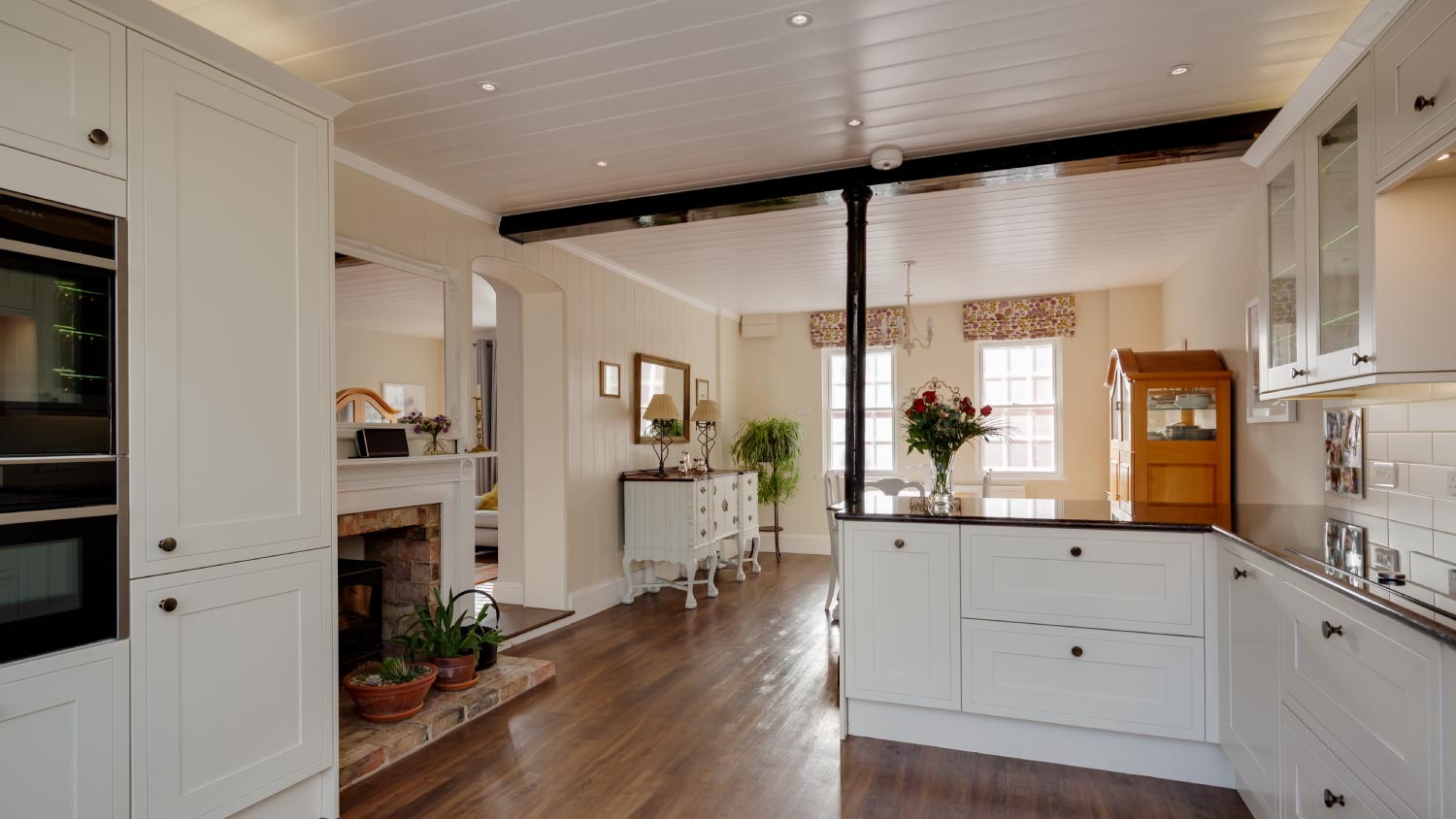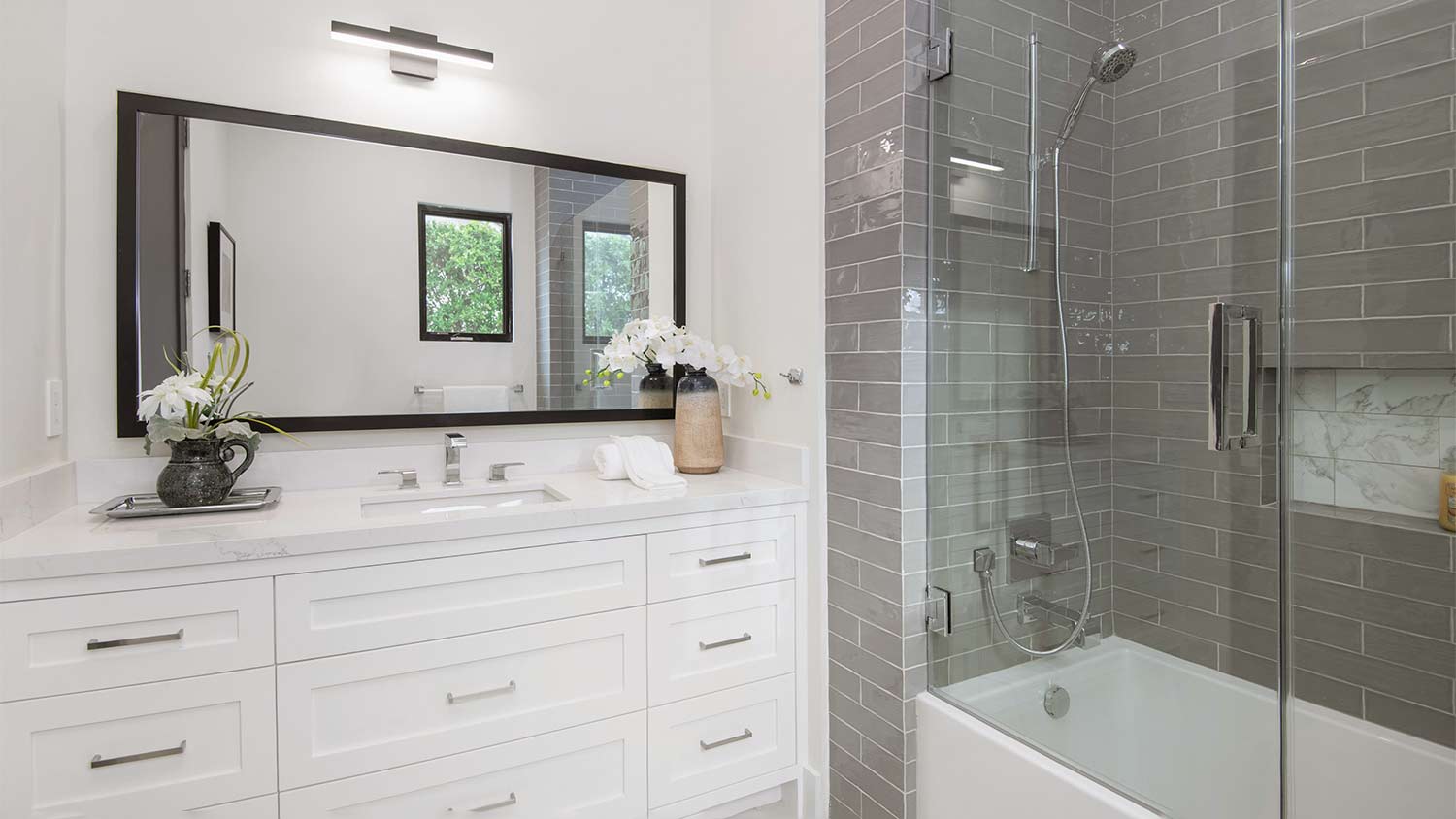
Skim coating drywall is a great alternative to replacement, and is often more affordable. Use this guide to estimate the cost to skim coat walls in your home.


Measure the total square footage of your walls to determine drywall needs.
Drywall sheets come in three standard sizes: 4x8, 4x12, and 4x16 feet.
Round up the number of sheets you need, then add 10% to account for waste and overage.
If you’re planning a renovation or building a new home, you’ll need to consider how much drywall you need to finish the interior rooms. Luckily, estimating your drywall needs is simple. This guide covers the math required to determine how much drywall you need.
To determine how many drywall sheets you need for a project, you’ll need to know the square footage of the wall and the size of the drywall sheets you’re using. Below is an example of the number of sheets required for various-sized rooms, based on three common drywall sheet sizes.
| Wall Square Footage | Number of 4x8 (32 sq. ft.) Drywall Sheets | Number of 4x12 (48 sq. ft.) Drywall Sheets | Number of 4 x 16 (64 sq. ft) Drywall Sheets |
|---|---|---|---|
| 200 | 7 | 5 | 4 |
| 400 | 13 | 9 | 7 |
| 600 | 19 | 13 | 10 |
| 800 | 25 | 17 | 13 |
| 1,000 | 32 | 21 | 16 |
| 1,200 | 38 | 25 | 19 |
| 1,400 | 44 | 30 | 22 |
| 1,600 | 50 | 34 | 25 |
4-by-8-foot sheets cover 32 square feet. You can hang this type of drywall vertically or horizontally.
4-by-12-foot sheets are ideal for tall or long walls and cover 48 square feet. A larger size allows you to hang a single sheet from the floor to the ceiling in a tall room.
4-by-16-foot sheets cover 64 square feet and require multiple people to install. They can cover longer and taller walls.

To determine how much drywall you’ll need for your project, divide the square footage of the room by the size of your drywall sheet, like so:
Room square footage/sheet size = number of drywall sheets needed
If you calculate a decimal, round it up to the nearest whole number to determine how many drywall sheets you need. For example, if your room is 600 square feet and you use 4-by-8 drywall sheets, you’d round 18.75 up to 19 total sheets. Don’t forget to add 10% to account for overage.
Ready to get started? Here’s how to measure the amount of materials you need for your drywall installation project.
The first step in determining how much drywall you need is to calculate the square footage of the space. Follow these steps to measure your room and determine the amount of drywall needed for your project:
Measure the width and height of each wall
Multiply the width by the height to get the wall’s square footage
Add the square footage of each wall together to get the room’s square footage
Divide the total square footage by the size of the drywall board (for example, an 8-by-4-foot drywall board covers 32 square feet)
Round the resulting number to the nearest whole number
Add in 10% to account for overage
For example, a room with two 10x12-foot walls and two 10x8-foot walls has a total square footage of 400. Using 4x12-foot drywall boards, you’d need at least nine drywall boards to cover the room, including overage. Hiring a drywall contractor helps ensure you correctly estimate your drywall needs.
You’ll need additional materials beyond just drywall sheets for this project. Here’s how to estimate the amount of materials you need for your project:
Drywall tape goes around the perimeter of the drywall board. Add the length of each side together to get the total linear feet and determine the amount of drywall tape you need.
Joint compound or drywall mud smooths the seams between drywall boards and covers imperfections to lessen the chances of paying for drywall repair costs in the future. You’ll need 0.053 pounds of joint compound per square foot of drywall.
Drywall screws or nails help hold the drywall boards in place, and you’ll need one per every square foot of drywall.
Corner beads are installed in the room's corners and measure eight or 10 feet long. Add the length of all corners and divide by the length of the beads to determine how many you need.
Drywall installation is a doable project for a DIYer with the right comfort level and experience. However, if you’ve never installed drywall before, you might prefer to hire a local drywall installer to do the drywalling for you. Drywall installation costs between $1,000 and $3,250, which includes materials and labor. Labor accounts for about $1 to $2.10 per square foot, so you can certainly save money by installing it yourself. However, if you make a mistake, it may cost you more to fix it than you saved on labor costs initially.
The amount of drywall you need for a 1,000-square-foot basement depends on the ceiling height, angles, number of doors and windows, and more. To find the wall square footage, multiply the width and height of each wall, minus any gaps from windows or doors, and add the totals together. You’ll also need enough drywood nails or screws to install the drywall correctly.
The terms drywall and Sheetrock are often used interchangeably. However, drywall is the name of the material, while Sheetrock is a brand name for a type of drywall. All Sheetrock® is drywall, but not all drywall is Sheetrock. As a brand, Sheetrock tends to be on the pricier side because it’s a high-quality and trusted name, but you can find lower-cost drywall if your budget is limited.
From average costs to expert advice, get all the answers you need to get your job done.

Skim coating drywall is a great alternative to replacement, and is often more affordable. Use this guide to estimate the cost to skim coat walls in your home.

Installing drywall is the most common way to finish your home’s interior. Use this drywall installation cost guide to see what your project is likely to cost.

Installing beadboard ceilings is a great DIY project. Learn what to expect cost-wise from this project, whether removing or covering a popcorn ceiling.

How long does drywall mud take to dry? In most cases, you need to wait at least 24 hours before moving to the next step of your project. Read on to learn more.

Hanging drywall can be incredibly frustrating or a breeze, and it all depends on your technique. Use this guide on how to hang drywall to make your job easier.

If your wall feels cold and wet, it could be a sign of a larger issue. Let’s look at a few reasons this could be happening and discuss when to call a pro.